
"Paul Williams was a believer. He started being a believer when he was 16, tugging on your coat sleeve, going, 'Hey, pal, this is the real thing. You should listen to this, for these reasons." And he did it his entire life. He made it his mission to bring great music to your attention.
His writing was very conversational and fan oriented, in the sense that he was a fan. He wasn't reviewing records he didn't like because he got the assignment from some guy in an office. The passion was always there. You could tell that Paul was someone who wrote about things that he actually cared about.
I've bought and read everything with his name on it. I got to know Paul a little over the years – we bumped into each other at shows. I was thrilled to meet the guy who interviewed the Doors. You go, "Wow, those were the days when giants walked the earth, and here was a guy who talked to them for his mimeographed magazine."
One of the great things about Paul was I don't think he thought people all over the world were reading him. But he brought things out of the music in a way that you didn't get from The Ed Sullivan Show. Bands might sell more records by being on Ed Sullivan. But Paul was delivering their music to a small fervent audience – people who were believers, just like him."
— Peter Buck, R.E.M.
![]()
"Paul Williams was huge in my life, although I never met the guy. I started buying Crawdaddy at the local head shop when I was in eighth grade, and it truly dropped a bomb in my head, not only as intelligent writing about ideas via pop music, which nobody else was doing then, but a pretty solid education all around. I followed up all his allusions and read all the books he recommended--thanks to him I found Pynchon's V. at the public library, for example...
"
— Luc Sante
![]()
What follows is an informally-annotated list of Paul's "collected works", sorted into four groupings he devised himself: Music and Culture, Science Fiction Projects, Practical Philosophy, and Hippie Memoirs and Collections. The books are listed chronologically within the groupings.
Crawdaddy! Magazine
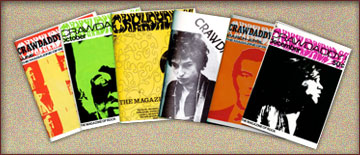
Inspired by Paul's familiarity with science fiction fanzines and folk music publications, Crawdaddy! was the first rock magazine to write of the music as if it were music itself saw the light of day in January, 1966. Mostly self-penned in the beginning, and then a vehicle for such incandescent writers as Sandy Pearlman, Richard Meltzer, and Jon Landau, Crawdaddy! chronicled rock's growing self-awareness and communicative power, helping to coalesce a nascent progressive underground which would irrevocably change the music, and provide a template for any aspiring writer. I should know. Finding issue #7 at a "head shop" on St. Mark's Place in the winter of 1966 was a life-changing experience, showing me a new way to understand the music I loved, and how I might repay the favor through my own words.
— Lenny Kaye
_______________________
The tabula rasa of rock fandom is Paul Williams’ Crawdaddy and Greg Shaw’s Mojo Navigator. Folks argue whether Crawdaddy was first (both came out with their premier issue at roughly the same time), but to me that is not so important. Crawdaddy was very serious, from the very start.
Reading Crawdaddy brings about a superb fly-on-the-wall feeling. The Diggers were amazing, the Velvet Underground were under-rated,The Doors were a revelation live and the guys in the Mystery Trend felt disconnected from the Frisco rock scene. Read it as it happens, as it happened. 1960’s rock fandom doubtlessly begat seventies punk, begat rock journalism good and bad, begat freeform radio, and begat music blogging.
It is very difficult to think this through unless we acknowledge the science-fiction fandom roots of all rock fanzines and of rock fandom. The rock fandom Big-Name-Fans had been SF-fans: Paul Williams, Lenny Kaye, Greg Shaw, even Lester Bangs had dabbled in the world of science-fiction fanzines and SF-conventions.
Living in the Megapolis of unfiltered info, it is almost impossible to understand how important publications like Crawdaddy were. They were the distributors of information, of enthusiasm, the keepers of the flame and the counter-culture life-line for the provincial hepcats. They built bridges between regional scenes, they brought about record company attention for bands that otherwise wouldn’t have gotten beyond their immediate region.
Paul Williams pioneered this. Chalk it up alongside all his other accomplishments.
— Johan Kugelberg
_______________________
The entire 1966-1968 run of the original magazine is available for viewing here, courtesy of Wolfgang’s Vault:
_______________________
In an interview with Rockcritics.com, Paul talks extensively about the founding of Crawdaddy! and the early days of rock writing:
Read
_______________________
And a cross-section of Paul’s music writings, including excerpts from Crawdaddy! and from the book Outlaw Blues, is available here:
_______________________
Crawdaddy Home Page (www.cdaddy.com)
New Crawdaddy!
Crawdaddy shifted to a slick magazine format from 1971-1979, under new editor Peter Knobler – a period when the magazine featured writing by Joseph Heller, John Lennon, Michael Herr, Cameron Crowe, Williams S. Burroughs as well as Paul himself. From 1993 to 2003, Paul reclaimed the Crawdaddy! name for an energetic new personal zine, which last for 28 issues and featured substantial writing by Paul as well as contributions from Clinton Heylin, Carl Baugher, Lewis Shiner, Bart Mendoza, Cindy Lee Berryhill, Michaelangelos Matos and many others.
“I came across the “new” Crawdaddy! when I got Paul’s 100 Best Singles book and saw an ad and wrote in. I was used to reading more formal, professionalized writing and it struck a chord to see him getting personal—I liked both approaches. I wrote a letter recommending Moby’s Everything Is Wrong and he printed it; I took it as a cue to try some more. I wound up writing a handful of longer pieces for the newsletter; it’s rough work, but I’m still grateful to Paul for giving me the opportunity to say something somewhere.”
— Michaelangelos Matos
![]()
Outlaw Blues: A Book of Rock Music (1969)
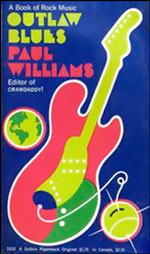
Collecting a medley of Paul's writings from the pages of Crawdaddy's classic era, Outlaw Blues provides the best introduction to his intensely personal and philosophically emotive voice, which revolutionized how writers might refract rock's cultural and social impact. He discusses and celebrates the Doors, the Beach Boys, Dylan, and the Buffalo Springfield, ruminates with Brian Wilson and producer Paul Rothchild, and in the news-flash of "What Goes On," provides a ear-witness account of how it felt to be a part of rock's glorious flowering.
— Lenny Kaye
![]()
Bob Dylan: What Happened? (1979)
![]()
The Map, Rediscovering Rock and Roll (1988)
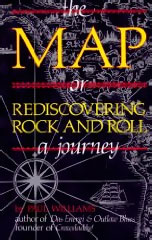 You can't get away from your first love. S/he is there in all your loves; and locusing rock and roll within his ongoing psychic pilgrimage, Paul returns to his virgin spring. Not that he ever really left, but he did keep the music at ear's length throughout much of the seventies. In The Map he feels the fever again, mid-eighties ruminations of what it feels like to listen anew, of the thrill of going into that record store or picking up a music rag or hearing something on the radio - pre-cyber - and writing it all down. There's a different cast of characters (he listens to Prince and Husker Du, watches videos and Live Aid) but it's like the changing scenery as you flip the compass, wandering, of knowing you'll be able to get back home.
You can't get away from your first love. S/he is there in all your loves; and locusing rock and roll within his ongoing psychic pilgrimage, Paul returns to his virgin spring. Not that he ever really left, but he did keep the music at ear's length throughout much of the seventies. In The Map he feels the fever again, mid-eighties ruminations of what it feels like to listen anew, of the thrill of going into that record store or picking up a music rag or hearing something on the radio - pre-cyber - and writing it all down. There's a different cast of characters (he listens to Prince and Husker Du, watches videos and Live Aid) but it's like the changing scenery as you flip the compass, wandering, of knowing you'll be able to get back home.
A grand cartographer.
— Lenny Kaye
![]()
Rock and Roll: The 100 Best Singles (1993)
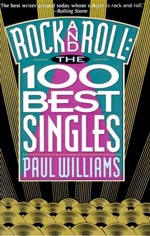 From Robert Johnson to Nirvana, by way of Elvis, Buddy Holly, the Beatles, The Stones, Jimi Hendrix, R.E.M., U2, the Sex Pistols, and everybody else: this is Paul’s deeply informed and impassioned guide to the 100 best rock and roll singles of all time.
From Robert Johnson to Nirvana, by way of Elvis, Buddy Holly, the Beatles, The Stones, Jimi Hendrix, R.E.M., U2, the Sex Pistols, and everybody else: this is Paul’s deeply informed and impassioned guide to the 100 best rock and roll singles of all time.
"The best writer around today who's subject is rock and roll"
— Rolling Stone
“The pure joy of his writing is that it comes from a heart that speaks the truth, from a pen of deep talent.”
— Bill Graham
When Paul was working on the Hundred Best Singles, he was conducting “due diligence”, and seemed to think I could help him with British punk, a blind spot. So we listened to the Buzzcocks and Wire and The Clash. He pointed out how “I’m So Bored With The U.S.A” was really just a fake-Ramones song, and how that made the song’s sentiment ironic, not in a good way. I never heard early Clash the same way again. We tried some David Bowie, because Paul had always felt resistant to him, and nothing I played really changed his impression. Then I told him I had a song I wanted to campaign for, nothing to do with punk, and played him Bachman-Turner Overdrive’s “You Ain’t Seen Nothin’ Yet” at top volume. (Paul was always into volume.) He put it in the book.
— Jonathan Lethem
Rock and Roll: The 100 Best Singles
![]()
Bob Dylan: Performing Artist, Vol 1. (1990)
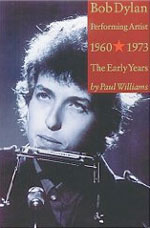 The three volumes of Paul’s Bob Dylan: Performing Artist represent Paul’s single most extended commitment of his writing life, and one of the monumental accomplishments in music writing per se, bar none. Neither a biography nor a traditional study, Paul’s approach threw off the shackles of treating Dylan either strictly as a poet or recording artist, as well as defying the logic of “official releases” years before Dylan’s own “Bootleg Series” legitimated the wider world of bootleg Dylanology. Paul presented Dylan as a supreme inventor in a an encompassing and vernacular musical style, one whose ever-changing songs were never defined in any single performance, whether in the studio or on stage, but instead represented a dynamic evolution. The book – for it is, ultimately, one gigantic tapestry of a book – became a way of life for Paul for many years, and for his readers served as a compass to the embrace of Dylan’s whole life’s art in the years when most listeners had still tended to pick or choose an album or era and dismiss much or all of the rest. Paul’s generosity paved a new road through a master artist’s unknown worlds. Above all, these books are evidence of Paul’s own genius of attentiveness.
The three volumes of Paul’s Bob Dylan: Performing Artist represent Paul’s single most extended commitment of his writing life, and one of the monumental accomplishments in music writing per se, bar none. Neither a biography nor a traditional study, Paul’s approach threw off the shackles of treating Dylan either strictly as a poet or recording artist, as well as defying the logic of “official releases” years before Dylan’s own “Bootleg Series” legitimated the wider world of bootleg Dylanology. Paul presented Dylan as a supreme inventor in a an encompassing and vernacular musical style, one whose ever-changing songs were never defined in any single performance, whether in the studio or on stage, but instead represented a dynamic evolution. The book – for it is, ultimately, one gigantic tapestry of a book – became a way of life for Paul for many years, and for his readers served as a compass to the embrace of Dylan’s whole life’s art in the years when most listeners had still tended to pick or choose an album or era and dismiss much or all of the rest. Paul’s generosity paved a new road through a master artist’s unknown worlds. Above all, these books are evidence of Paul’s own genius of attentiveness.
— Jonathan Lethem
“The excitement, the commitment, the wonder comes pouring off every page… breathless and breathtaking in its attention to detail.”
— John Bauldie
“Paul Williams historicizes Dylan’s genius of American tongue.”
— Allen Ginsberg
“It's about time someone took a look at Dylan the performer...He has that scary intensity as a performer that hasn't before been translated to the critical realm.”
— Jerry Garcia
![]()
Bob Dylan: Performing Artist, Vol 2: The Middle Years (1992)
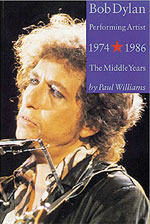
“Head and shoulders and maybe even legs above everyone else… A voyage of rediscovery.”
– Rolling Stone Magazine
“Easily the definitive study of Dylan’s live work.”
– Alan Light, The Cambridge Companion to Bob Dylan
![]()
Bob Dylan: Mind Out of Time (Performing Artist Vol. 3, 1987-2000) (2004)
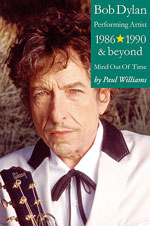 The complete artist study is not a popular one in pop-music writing, which has tended to be ruled by immediacy (who’s on the charts right now) and news value (who’s been arrested). So the Dylan books are among the most eye-opening of my young critical life, because they didn’t presuppose that we would be in possession of everything under discussion. What they presupposed is that we might risk being persuaded by Paul’s descriptions of “She’s Your Lover Now” and “Freeze Out.” When the former song appeared on the first Bootleg Series box, I went for it immediately; I wanted to know if it could come close to what Performing Artist Vol. 1 had to say, and goddamn if he didn’t nail it.
The complete artist study is not a popular one in pop-music writing, which has tended to be ruled by immediacy (who’s on the charts right now) and news value (who’s been arrested). So the Dylan books are among the most eye-opening of my young critical life, because they didn’t presuppose that we would be in possession of everything under discussion. What they presupposed is that we might risk being persuaded by Paul’s descriptions of “She’s Your Lover Now” and “Freeze Out.” When the former song appeared on the first Bootleg Series box, I went for it immediately; I wanted to know if it could come close to what Performing Artist Vol. 1 had to say, and goddamn if he didn’t nail it.
— Michaelangelos Matos
“A gem of a book with fanatic leaps of real insight.”
— Sam Shepherd
![]()
Bob Dylan: The Genius of A Performing Artist (2003-1990 and back again) or, Performing Artist, Vol 4
(unfinished, unpublished)
![]()
Bob Dylan: Watching The River Flow (1996)
 This substantial and embracing collection assembles all of Paul’s sporadic writings on Dylan that weren’t part of the Performing Artist outpouring, and reprints the entirety of Dylan: What Happened?, Paul’s prescient defense of Dylan’s gospel performances.
This substantial and embracing collection assembles all of Paul’s sporadic writings on Dylan that weren’t part of the Performing Artist outpouring, and reprints the entirety of Dylan: What Happened?, Paul’s prescient defense of Dylan’s gospel performances.
“Anything Paul Williams writes about Bob Dylan—and always in his wonderfully unpretentious, conversational, and heartfelt manner—is worth reading.”
— Jonathan Cott
Bob Dylan: Watching the River Flow
![]()
Neil Young: Love To Burn (1997)
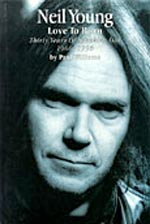 This may be the first critical book-length analysis of a life in rock inspired by a bootleg album. In Love to Burn, Paul Williams examines, with thorough passion and historical detail, the rare-and-unreleased contents of Rock 'N' Roll Cowboy, a four-CD Neil Young collection that creeped out from under certain record-store counters in the mid-Nineties. Williams devotes a long chapter to each disc, filling in the arc of Young's career with additional essays (some previously unpublished) on lightning-rod records such as On the Beach and the 1994 Kurt Cobain eulogy, Sleeps With Angels. Along the way, Williams also tells a deeper story about art and defiance – the high short-term price and enduring rewards of creative independence and emotional immediacy. His defense in the Disc 3 chapter of Young's weird Eighties – spinning through electronica, country music and big-band soul –resonates with Williams' own faith, as a writer, in the beauty of impulse, the guidance of the heart and the lessons of listening between the cracks.
This may be the first critical book-length analysis of a life in rock inspired by a bootleg album. In Love to Burn, Paul Williams examines, with thorough passion and historical detail, the rare-and-unreleased contents of Rock 'N' Roll Cowboy, a four-CD Neil Young collection that creeped out from under certain record-store counters in the mid-Nineties. Williams devotes a long chapter to each disc, filling in the arc of Young's career with additional essays (some previously unpublished) on lightning-rod records such as On the Beach and the 1994 Kurt Cobain eulogy, Sleeps With Angels. Along the way, Williams also tells a deeper story about art and defiance – the high short-term price and enduring rewards of creative independence and emotional immediacy. His defense in the Disc 3 chapter of Young's weird Eighties – spinning through electronica, country music and big-band soul –resonates with Williams' own faith, as a writer, in the beauty of impulse, the guidance of the heart and the lessons of listening between the cracks.
— David Fricke
![]()
Brian Wilson & The Beach Boys – How Deep Is The Ocean? (1997)
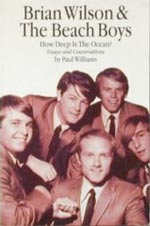 The Beach Boys and Brian Wilson were subjects that occupied Paul Williams from the very beginning. In September, 1966, the fifth issue of Crawdaddy! contained the first words Paul ever wrote about the Beach Boys: in a news column, he interjected his opinion that Pet Sounds was the band's "finest LP" and tipped off his readers to watch for a new single called "Good Vibrations" from the forthcoming album Dumb Angel...later, of course, to be known as SMiLE.
The Beach Boys and Brian Wilson were subjects that occupied Paul Williams from the very beginning. In September, 1966, the fifth issue of Crawdaddy! contained the first words Paul ever wrote about the Beach Boys: in a news column, he interjected his opinion that Pet Sounds was the band's "finest LP" and tipped off his readers to watch for a new single called "Good Vibrations" from the forthcoming album Dumb Angel...later, of course, to be known as SMiLE.
The myth that was SMiLE was equal parts musical and journalistic and Paul Williams was an eyewitness – and a perpetrator. How Deep Is The Ocean? contains virtually all of Paul's passionate writing about Wilson and the Beach Boys, from the first mention in 1966 to a 1996 discussion of Orange Crate Art.
But at the heart of the book is SMiLE.
Paul saw very early – long before it became fashionable – that Brian Wilson was creating sublime music of lasting importance. His perceptions about Brian – who, when Paul began to write about him, conjured up little more than striped shirts and surf songs –mirror his trailblazing interpretation of the importance of the new music that was being made in the 1960s. He knew the music defined its times and he set out to treat it with the intelligence and seriousness it deserved.
And with Paul's astonishing knack for being part of some of the most storied moments in rock history, he also sat in the tent in Brian's living room at Christmas, 1966, smoking pot for the first time as Brian played him the acetates of SMiLE. He wrote about the music he heard, music of such strange beauty, and his writing helped create the legend. All of it is here, including his famous long interview with Wilson confidante David Anderle in November, 1967, called "How SMiLE Got Lost," and its postscript "SMiLE is Done," another conversation with Anderle that took place thirty years later – and seven years before SMiLE really WAS done.
— David Bither
Brian Wilson & The Beach Boys--How Deep Is the Ocean?
![]()
The Twentieth Century’s Greatest Hits (2000)
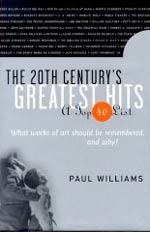 "Williams dashes to the sidewalk any "high art/low art" arguments still left gasping into this century. His observations and tastes are refined, idiosyncratic, and brilliant."
"Williams dashes to the sidewalk any "high art/low art" arguments still left gasping into this century. His observations and tastes are refined, idiosyncratic, and brilliant."
-- Michael Stipe
"Paul Williams's enthusiasm is a search engine, a virus, a conspiracy theory, an art itself. His twentieth century is almost as important as your own."
— Jonathan Lethem
The 20th Century's Greatest Hits
![]()
Philip K. Dick
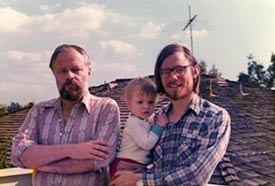
Paul’s relationship with the pop-surrealist master of American fiction was long, and life-changing for both men. The story begins with Paul’s early encounter with Dick’s writing, impressions of which he recorded in an essay in Pushing Upwards. In time Paul turned his enthusiasm into both a friendship and a journalistic encounter – an assignment to write about Dick for Rolling Stone. The piece that resulted was arguably the key first step to Dick’s long emergence from a pulp subculture into the forefront of American writers. The endorsement so many of us read on our first copies of Dick’s books in the 1970’s (“The most brilliant SF mind on any planet!” – Rolling Stone) was, of course, Paul’s.
The historic article is here.
_______________________
Some brief, lovely footage of Paul talking about Phil Dick is viewable throughout this clip, beginning at the 1:25 and 7:40 and 9: 10 marks:
watch the video
_______________________
Dick, with prescience about Paul’s devotion to his work and what that devotion could accomplish, asked Paul to serve as his estate’s literary executor. In that role Paul, with the help of Dick’s agent and family, gently stewarded the revival of Dick’s copyrights and reputation, to the point where today nearly every word Dick ever published is in print.
Paul’s method wasn’t so different from Crawdaddy!, in a sense: he started a homemade magazine, for which he created a subscription list which became a community, and then a kind of movement:
The Philip K. Dick Society Newsletter
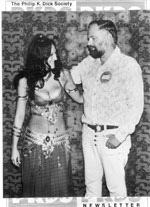 The Society was active from 1983 to 1992, during which time 30 issues of the Philip K. Dick Society Newsletter were published. I was among the young acolytes who helped stuff, stamp and label envelopes, and then sort the results as required for ‘bulk mail’ – my glimpse of Paul Williams and his preferred system for changing the world. During these unforgettable sessions Paul would keep his volunteers enthralled with stories of conversations with Dick, and with bootleg Dylan cassette tapes he’d brought along for entertainment on his drives down from Sonoma.
The Society was active from 1983 to 1992, during which time 30 issues of the Philip K. Dick Society Newsletter were published. I was among the young acolytes who helped stuff, stamp and label envelopes, and then sort the results as required for ‘bulk mail’ – my glimpse of Paul Williams and his preferred system for changing the world. During these unforgettable sessions Paul would keep his volunteers enthralled with stories of conversations with Dick, and with bootleg Dylan cassette tapes he’d brought along for entertainment on his drives down from Sonoma.
Eventually Paul expanded the Rolling Stone article substantially into a short, irreplaceable book about Dick, called Only Apparently Real.
— Jonathan Lethem
Purchase copies of The Philip K. Dick Society Newsletter HERE
![]()
Only Apparently Real (1986)
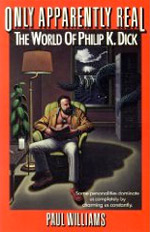
This biography of Philip K. Dick, the great science fiction writer who died of a stroke in 1982 at the age of 53, is by one of his friendsalso his literary executor and founder of the PKD Society, a kind of fan club. Williams skillfully interweaves memoir with transcripts of interviews and conversations to give a portrait of the artist as friend, husband, father, genius, seeker after truth, paranoid and perpetually indigent writer. Tracing Dick's life from his Berkeley childhood through an apprenticeship under editor Anthony Boucher, his early novel sales to Donald Wollheim at Ace, his five marriages, Williams maintains that Dick engaged in an essentially religious questthe stripping away of the "only apparently real" to get to the real. The author has done a good job making this complex and unusual man understandable and sympathetic.
— Publisher's Weekly
“Only Apparently Real successfully captures the Phil Dick I knew so long ago in California: a writer who was funny, audacious, sometimes outrageous and a little scary.”
— Ron Goulart
“Only Apparently Real is essential reading for anyone who wants to understand the PKD phenomenon or simply to find out what all the fuss is about.”
— Michael Bishop
![]()
Theodore Sturgeon

Paul was a fan of the writing of Theodore Sturgeon when he was thirteen, and in later years a personal friend of Ted, and was instrumental in helping Ted to get collections of stories together for Blue Jay Books in the 1980s. After Ted's death, Paul, in part because of the fine work he had done on the Philip K. Dick estate, was asked by the Sturgeon estate to edit the collected stories, and provide the notes. The notes Paul did for the first twelve volumes (the edition is still not complete) are models of clarity and insight, revealing and sometimes gripping reading--and how often can you say that about story notes? They are based on original material in the estate files, and on careful reading and deep knowledge of the man and his position in the genre. They are one of Paul's masterpieces and essential to all future Sturgeon studies. I am in awe of this accomplishment.
— David G. Hartwell
___________________________
The Complete Stories of Theodore Sturgeon
___________________________
Paul Williams on Theodore Sturgeon
___________________________
David G. Hartwell’s Age of Wonders
There is a book titled Age of Wonders, about science fiction. It contains the distilled knowledge and opinions of David G. Hartwell and Paul S. Williams, and was contracted as a collaboration. At the commencement of the writing of the manuscript, Paul came to stay in my house and spent a whole day writing nearly a dozen opening paragraphs, while I went to my job in Manhattan. I was surprised to find that none of them satisfied him, but more surprised when he asked me after dinner to just sit down and write an opening. I did, and he said, "keep writing," and I did, and by 11pm had drafted the first four pages of the book. He liked the tone and the style, and it did embody our joint ideas of what we were up to, and so I continued to write the next day and the day after and finished the first chapter.He examined every word and made hourly useful suggestions at every point. That is how we had worked on some of Paul's earlier books, only he had been putting the words on paper, not me. We had switched roles. We agreed that this was working well and that we would continue as long as that was the case. We wrote the book in twelve weekends, some in my home and some in his in Glen Ellen, CA. I drafted the whole manuscript. Then the publisher rejected it because it was not in Paul's voice. We were surprised and disappointed, and payed the small advance back. Paul said, just put your name on it and try to resell it, and so I did, after approximately 27 rejections. I still think it is a good book and still think that Paul in effect co-wrote it.
— David G. Hartwell
Das Energi (1973)
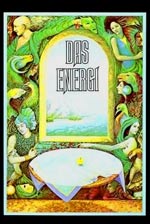 By far Paul Williams’ biggest selling book (with more than a half-million copies sold) Das Energi is a relentlessly positive,incredibly empowering consciousness handbook. Written in 18 days in the summer of 1970, in the form of thoughts, ruminations and intriguing lines of prose-poetry, Das Energi is a life-love-and-liberty-affirming treatise on the economics of human and cosmic energy, emphasizing the vital importance of energy flow. A timeless treasure fusing rock and roll, Eastern philosophy, and New Age consciousness, Das Energi exists as both an oracle of wisdom and a harbinger of the coming paradigm shift in awareness.
By far Paul Williams’ biggest selling book (with more than a half-million copies sold) Das Energi is a relentlessly positive,incredibly empowering consciousness handbook. Written in 18 days in the summer of 1970, in the form of thoughts, ruminations and intriguing lines of prose-poetry, Das Energi is a life-love-and-liberty-affirming treatise on the economics of human and cosmic energy, emphasizing the vital importance of energy flow. A timeless treasure fusing rock and roll, Eastern philosophy, and New Age consciousness, Das Energi exists as both an oracle of wisdom and a harbinger of the coming paradigm shift in awareness.
— Ron Colone
![]()
Coming (1977)
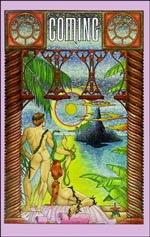
![]()
The Book of Houses (1980)

![]()
Common Sense (1982)
Common Sense (complete text on-line)
![]()
Waking Up Together (1984)
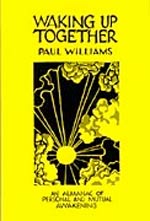 WAKING UP TOGETHER is a book of practical philisophy written like a letter to a friend, and organized in almanac form, with an entry for each day of the year. There is a subject index in the back. The book can be read in chapters, or used as an oracle, by opening at random or by looking up a particular month and day -- todays' date, your birthday, someone else's birthday. Waking Up Together is Paul Williams major book on personal awakening, planetary awakening, men and women, and living in the moment.
WAKING UP TOGETHER is a book of practical philisophy written like a letter to a friend, and organized in almanac form, with an entry for each day of the year. There is a subject index in the back. The book can be read in chapters, or used as an oracle, by opening at random or by looking up a particular month and day -- todays' date, your birthday, someone else's birthday. Waking Up Together is Paul Williams major book on personal awakening, planetary awakening, men and women, and living in the moment.
Williams talks about the issues at the center of our everyday lives: fear, personal power, awakening, men and women, living in the moment. He shares even more of his personality and his straightforward, practical philosophy than in his previous bestseller, Das Energi. And he puts it together in a way that is surprising, spontaneous, irresistable, and a lot of fun.
![]()
Remember Your Essence (1987)
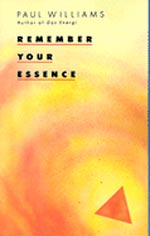 "Paul Williams' prose poem turns on a self-healer's gritty and hard-won common sense. It lifts the spirit."
"Paul Williams' prose poem turns on a self-healer's gritty and hard-won common sense. It lifts the spirit."
-- Aram Saroyan, poet and author of Trio: Portrait of an Intimate Friendship
![]()
Fear of Truth (1995)
![]()
How To Become Fabulously Weathly At Home in 30 Minutes (1999)
![]()
![]()
Time Between (1972)
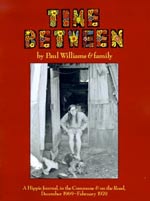 Published in 1972 and, for the first time in paperback, in 2000, as an exact facsimile of the typewriter-paper pages of the original manuscript, so you can see and feel the energy of the writing and the moment. "The theme of the book is transition, the sense of being caught between the old world and the new--I wrote it in a burst of energy between Dec. 27, 1969 and Feb. 19, 1970. The book starts by describing the goings-on around me (mostly sex and LSD, enthusiasm and conflict) in the commune I was then living in in Mendocino, northern California. It continues through a disjointed cross-country rap on Stranger in a Strange Land, Charlie Manson, Mick Jagger, breaking free of the old world, love between men, moving to Canada – and settles into a visit and series of adventures in another commune, Total Loss Farm in Vermont. The book ends with the author's awareness of and suggested cure for his own schizophrenia (combined with final comments on the messiah myth, another recurring theme). Many different typewriters were used and some pages were written out in longhand."
Published in 1972 and, for the first time in paperback, in 2000, as an exact facsimile of the typewriter-paper pages of the original manuscript, so you can see and feel the energy of the writing and the moment. "The theme of the book is transition, the sense of being caught between the old world and the new--I wrote it in a burst of energy between Dec. 27, 1969 and Feb. 19, 1970. The book starts by describing the goings-on around me (mostly sex and LSD, enthusiasm and conflict) in the commune I was then living in in Mendocino, northern California. It continues through a disjointed cross-country rap on Stranger in a Strange Land, Charlie Manson, Mick Jagger, breaking free of the old world, love between men, moving to Canada – and settles into a visit and series of adventures in another commune, Total Loss Farm in Vermont. The book ends with the author's awareness of and suggested cure for his own schizophrenia (combined with final comments on the messiah myth, another recurring theme). Many different typewriters were used and some pages were written out in longhand."
– Paul Williams
Paul and I put this book together on a drafting board in my living room, and I published it under the Entwhistle imprint(which we jointly owned at the time). Paul had fled NY and Crawdaddy, and not yet gotten himself together again. He was very pleased as I was, with the raw authenticity of the ms reproduced in facsimile.
– David G. Hartwell
![]()
Pushing Upward (1973)
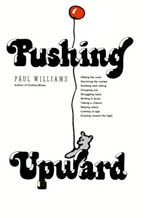 First published in 1973, Paul explained that this collection of essays, fragments, poems and songs and two interviews, "essentially represents my life and interests and development leading up to my 21st birthday in 1969." The book includes a long interview with Timothy Leary elaborating the journey he and Paul made together to John Lennon and Yoko Ono’s Bed-In For Peace in Toronto, as well as essays, first published in the Village Voice, Crawdaddy! and Rolling Stone, on subjects like R. Crumb and the Velvet Underground – as well as Paul’s first writing about Philip K. Dick.
First published in 1973, Paul explained that this collection of essays, fragments, poems and songs and two interviews, "essentially represents my life and interests and development leading up to my 21st birthday in 1969." The book includes a long interview with Timothy Leary elaborating the journey he and Paul made together to John Lennon and Yoko Ono’s Bed-In For Peace in Toronto, as well as essays, first published in the Village Voice, Crawdaddy! and Rolling Stone, on subjects like R. Crumb and the Velvet Underground – as well as Paul’s first writing about Philip K. Dick.
![]()
Apple Bay (1976)
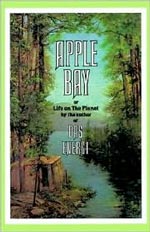 Apple Bay, one of Paul's relatively unsung and un-reprinted books, is actually a white-knuckle page-turner memoir of love, drugs, and fragmentation in a would-be utopian commune in the deep woods – a diagnosis of faultlines in the hippie dream and the nearest Paul ever came to writing a novel; a glimmer of T.C. Boyle’s Drop City.
Apple Bay, one of Paul's relatively unsung and un-reprinted books, is actually a white-knuckle page-turner memoir of love, drugs, and fragmentation in a would-be utopian commune in the deep woods – a diagnosis of faultlines in the hippie dream and the nearest Paul ever came to writing a novel; a glimmer of T.C. Boyle’s Drop City.
— Jonathan Lethem
Apple Bay, or Life on the Planet
![]()
Right To Pass (1977)
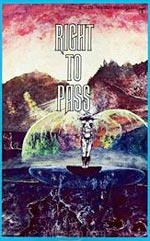 Part travelogue, part "mainstream" rock writing, part zen koan, Right
Part travelogue, part "mainstream" rock writing, part zen koan, Right
To Pass is best understood as a journal of Paul's post-Crawdaddy odyssey in the early seventies, attempting to follow his own muse bemused. There are articles written for Playboy (on the Woodstock festival) and New Times (Springsteen on the cusp of fame) that were deemed too idiosyncratic for publication; living memoirs of his on-the-road migration, from the Pacific northwest and thence across the ocean to Japan, with Raymond Mungo as Lewis to his Clark; and aphorisms that are himself looking in the mirror of his reader, examining our plight in this universe: "You are / fucking / everyone / you know."
— Lenny Kaye
![]()
Heart of Gold (written 1978, published 1991)
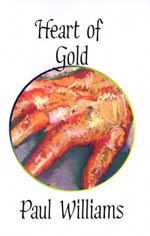
![]()